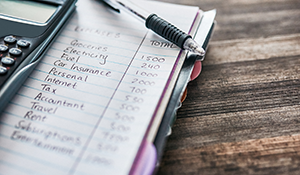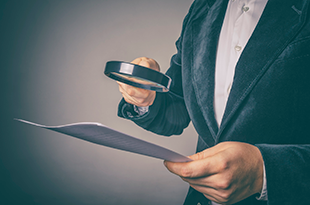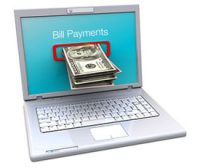Paying bills is an inevitable part of everyday life, but that doesn’t mean it has to be stressful. Here are some ways to get control of your budget and perfect the art of stress-free bill paying.
- Make a budget. Knowing what you are making and what you are spending is essential to proper bill paying. First, find out how much you are making every month and then subtract the static items such as rent or mortgage payments, credit card payments and cell phone expenses. Then, budget out how much you will need for other essentials (such as food and clothing). Once the essentials are accounted for, you can look at the money you have left and decide where to allocate the rest.
- Find a budget tool that works. One of the best ways to get a handle on your finances is to use a budgeting app such as Intuit’s Mint or PocketGuard. You can securely link your bank accounts to these apps and download all your transactions in the app. Your bank may also have an app to track your spending, so also check with them. You can then choose which tools to use to make a budget and categorize the transactions to be allocated to a certain part of the budget (such as food, car, housing, etc.).
- Set up autopay. Put recurring bills such as utilities, internet, and your cell phone on autopay so they will be automatically deducted from your account on their due date. If you decide to use autopay, it is still a good idea to look at the amounts being deducted every month to make sure everything is correct.
- Consider your non-regular payments. Don’t forget to account for bills that come due occasionally and plan for the cash outlay. Common examples of this are property tax payments, income taxes, and annual/semi-annual insurance payments. You will need to plan to have enough cash on hand for these expenses when they come due.
- Adjust due dates. Paying bills isn’t as stressful when you know that you can afford to pay them, and what better time to pay bills than right after you get paid! The money will be there and you can pay those bills before that money has a chance to go anywhere else. Consider asking if you can change the due dates for some or all of your bills to correspond with when your paychecks are deposited into your bank account.
- Don’t forget to pay yourself! One of the best ways to start developing a savings account is making yourself part of your budget! Take however much you think you can spare and set up an automatic transfer to a separate savings account. Use this money to establish an emergency fund of approximately six to nine months of expenses. This extra cushion will come in handy if something unexpected occurs.
Here’s a look at the new world of bank reconciliations and some ideas to use to ensure your bank account is accurate.
The bank reconciliation purpose
In a nutshell, a bank reconciliation ensures your account is accurate. This is done by comparing all your activity with what the bank is reporting.
The importance of timely bank reconciliations
There are several reasons for conducting these account reviews on a timely basis:
- Catch a mistake by the bank. Banks make mistakes. Reconciliations can help you catch these bank errors. And errors are more common with digital payment systems…often a small transposition or machine misread of a number can create a payment error.
- Catch a mistake by you. Yep, it’s difficult envisioning making an error, but that happens, too. It is easy to record the wrong payment amount. The only way to catch this is to look at your account and compare it to what you think you paid.
- Catch unauthorized use. If someone hacks into your mobile phone’s payment app and spends $20 of your money, how would you ever find out? Reconciliations uncover fraudulent activity you may have missed.
- Properly monitor automatic payments. With monthly payments automatically coming out of your account, it is easy to forget to account for these payments and have less in your account than you think you do. Timely reconciliations also help you identify ongoing payments that should be discontinued.
Tips for reconciling your accounts
Here are some tips for reconciling in the new world of banking.
- Reconcile every week (or every day!). Gone are the days when you need to wait for your monthly bank statement in the mail to reconcile your account. Use your bank’s online tools to reconcile once a week or even once a day. This will help identify problems as they occur and is especially important in identifying possible hacking or theft.
- Use your favorite app to capture your spending. Secure online applications are now replacing the traditional check register. You’ll still need to be disciplined to use the online tool when you spend money, so look for an application that is easy to record your spending.
- Combine reconciling with budgeting. Use your reconciliations as an opportunity to become better with budgeting your money. Use reporting functions to help classify your deposits and payments. Then compare them with what you think they should be. This moves the discipline from simple reconciliation to a more planned approach to comparing your budget to actual spending.
The way bank reconciliations are done may have changed over the past 20 years, but the vital role they play in maintaining your financial health will never disappear.
 The turn it on and forget it nature of automatic payments can create “zombie billing” cycles that go on without being reviewed or challenged, even after the product or service you pay for is no longer of value.
The turn it on and forget it nature of automatic payments can create “zombie billing” cycles that go on without being reviewed or challenged, even after the product or service you pay for is no longer of value.
Here are some ideas to keep this from happening to you.
Create a list. Make a list of the companies you authorize to use automatic bill payment. Include the account number each company uses, as well as payment amounts and frequency. When there’s a change in a card or bank account, you can consult the list to find the companies you need to notify.
Watch for fees. Make sure the bill-payment system you’re using is low-cost or no-cost. Some companies will charge you a fee for automatic payments. If your biller wants to charge you, pay them with a traditional check. Consider consolidating all your automatic payments within one bill-paying service. Your bank may even offer online bill payment with no fee.
Review underlying bills. Automated billing usually means you’re not getting paper copies of your bill. If you’re not receiving a physical copy, changes to your service may go unnoticed. If possible, opt to continue receiving email or paper billing statements. Review statements monthly to verify that your payment has not changed and there are no additional fees or errors.
Drop underused services. Periodically review all automatic payments. Drop products and services that are no longer of value.
Automatic billing is meant to simplify your life, but if you allow it to turn into zombie billing, it will have the opposite effect. Take care to review your accounts and statements to protect yourself and keep your finances under your control.